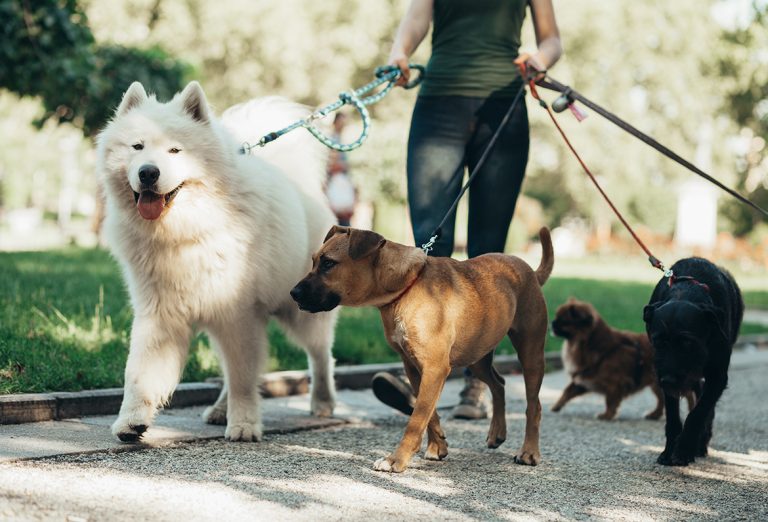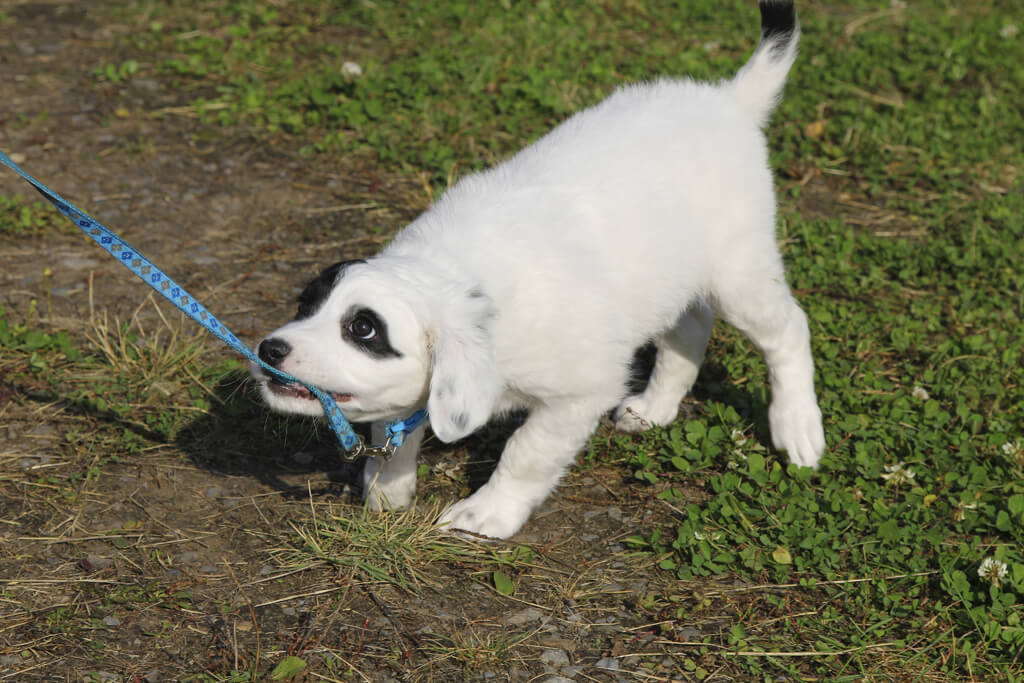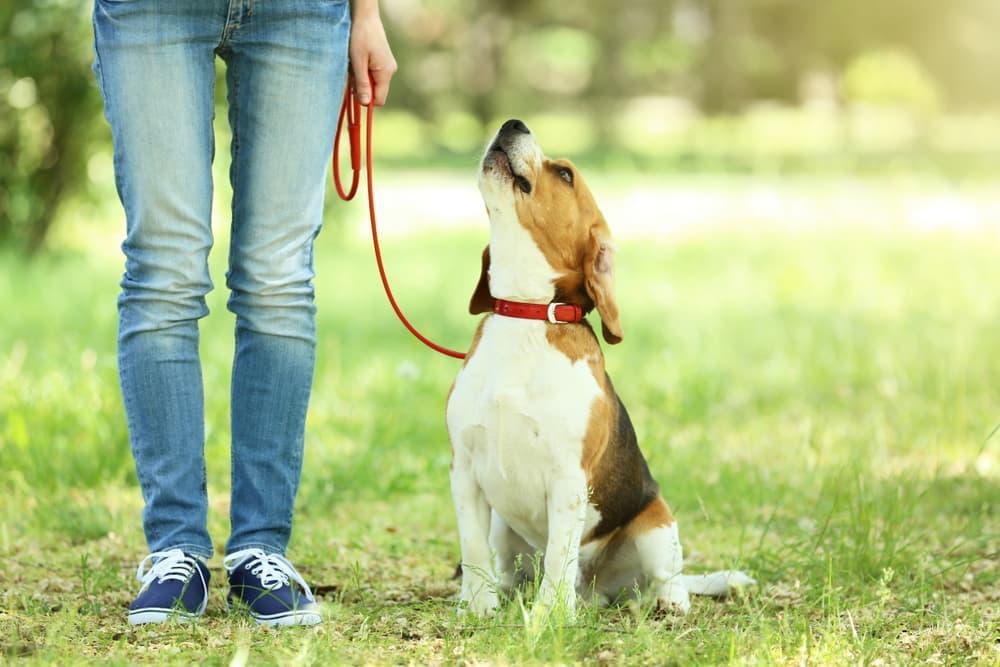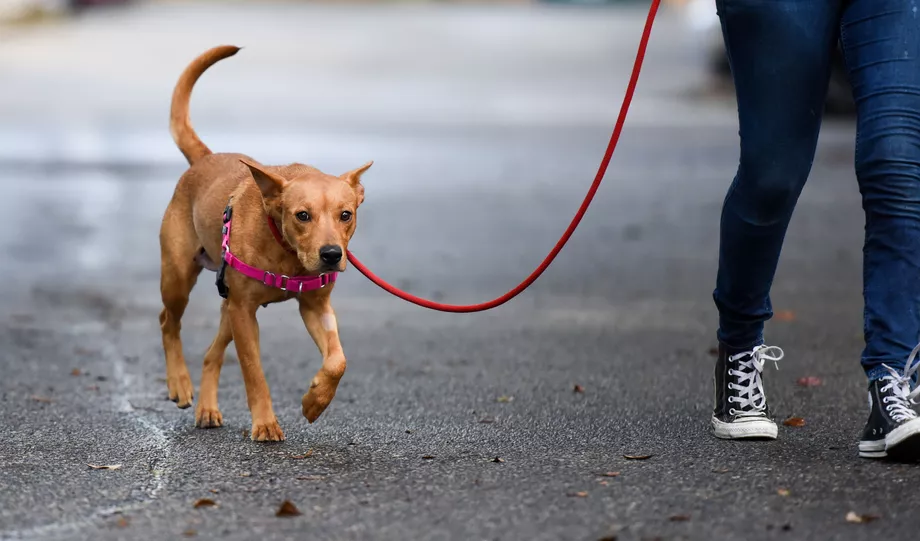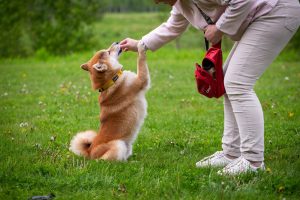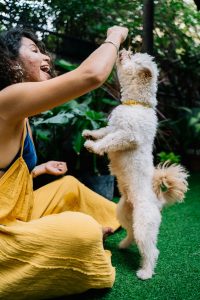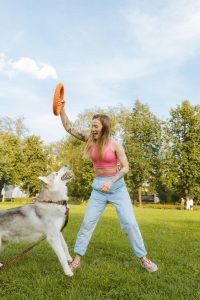So, you have brought home a tiny, fluffy bundle of joy. Whether you got your puppy from a local shelter, a reputable breeder, or on the street, you have to begin leash training. Yes, dogs can walk off-leash as well. But you have to start with leash training. How to leash train a dog?
Today, we will take a look at different strategies you can use to get to the end goal, that is a puppy walking by your side and being focused on you.
Why Is Dog Leash Training Important?
Training your dog to walk on a leash is one of the first things you need to work on. Without proper leash manners, your dog is not safe outside. And your entire walk routine is at risk.
Here are several reasons why dog leash training is important:
- You will get frustrated if your dog pulls on the leash, and that will cause even more problems in your dog-owner relationship
- Your dog will feel obligated to do something and will show repulsiveness and aversion towards the leash
- Pulling constantly has negative consequences for your dog’s health
- The tension in the leash helps communicate with your dog. A tight leash might signal your dog’s aggression, fear, and readiness for a fight
- But most importantly, we love our dogs, and we do not want them to come into harm’s way
Benefits Of Leash Training
Here are even more benefits of having a dog with proper leash manners. I cannot stress this enough. Leash training is one of the key parts of responsible dog ownership.
- You can control even the biggest breeds with proper leash training
- You can walk without your dog pulling on the leash
- There are opportunities to go here, there, and everywhere. Your dog can explore as much as it likes
- Provides exercise opportunities for both you and your puppy
- Better outdoor time, lots of more benefits to go outside without risking the life and safety of your dog
When Should You Start Leash Training?
As with every other aspect of dog training, it is best that you start while your pet is still a puppy. You can start as early as four to six weeks old. Now, personally, I would wait until 8 weeks.
Similar to children, puppies are fast learners. And they pick up things like a sponge.
The first thing you need to do is introduce the collar and leash. Let your puppy sniff them. Give treats to create a positive association with the leash. Then, attach the leash to the collar or harness, and let your pup get acquainted with it. Reward all the time.
Eventually, put the collar and leash on your puppy.
How To Train Your Dog To Walk On A Loose Leash
Loose leash walking is a great way to train your dog to walk by you. The goal here is to train your dog to walk on a leash while there is no tension. You do not pull your dog, and your puppy doesn’t pull you. Instead, the dog walks within the length of the leash. But do not use a retractable leash for this purpose.
Retractable leashes reward your dog when it pulls. Now let’s see how to do it.
- Start inside, and you can even try without the leash. Simply call your dog to come to you, and reward it with a treat
- Walk forward a few steps, and engage your dog along the way. When your dog meets you at your side, give another treat
- Repeat the exercise by walking around your house. Give your dog some time to pick up the game, and it will soon eagerly come to you and await a treat
- Repeat the exercise of walking around the home, but with the collar/harness and leash on
- Once your dog masters the loose leash walking inside, take it outside
- Start in a distraction-free area until your dog is better at it
How To Train Your Dog To Heel
Another walking technique is heel. In this type of walking, your dog is always on your left or right side. It doesn’t matter which one. Whatever works for you best, but it is important to choose a side. Your dog should keep your pace and stop when you stop.
- Lure your dog to your left or right side with a tasty treat and reward when they are next to you
- Continue rewarding without moving or making a single step
- Then, take a step forward and lure your dog once again with a treat. Reward when your dog is at your side
- Continue to move around, and only reward when the puppy is at your side. If your dog gets sidetracked, do not reward it. Instead, guide your dog to the side and begin from the start
- Once your dog gets better, start switching and increasing difficulty. Pick up the pace, stop randomly, or go in a different direction. Reward only when your dog is at your side
- Eventually, add the heel cue
- Move outside, and start from step 1
The Off-leash Training
Some dog trainers believe that you first need to teach your dog to walk by your side without a leash, and then put on a leash. The logic is that the leach is a crutch that you get used to it. It is a risky move, but it might work with a young puppy. I do not recommend it with an older dog that you have rescued. Puppies usually follow their owner everywhere in the beginning.
- Go into an outdoor space where there is zero distraction
- Call your puppy and reward it when it is next to you
- It is important that your area for training is an open field, but there are no people around
- The trick here is to move forward, backward, left, right, and as much as you can. In other words, be a crazy person
- The logic is that your dog will follow you. Reward when your dog gets to you
Tricks For Success
Whether you are doing some loose-leash training or heel dog training, there are a few things you can do to increase difficulty. But use it only when your dog masters the simple steps.
For example, you can practice moving in different directions. If your dog follows you only in one direction, it is time to switch things up. The goal is to surprise your puppy and do not let it anticipate your next step.
Another tip is to feed treats only on one side. This will teach your dog that the left side or the right side is the one to be. Here is a trick. Hold treats in the same side hand. That will make it easier for your dog to be close to the treats and not try to get on the other side to get the treats.
When your dog gets better at following you, begin to vary how often you feed and reward treats. The goal is not to bribe your dog for following you. The goal is to how to leash train a dog. And eventually, your dog should walk by your side for the sake of being close to you, not for the treats in your hand.
To get there, reward every second successful follow, then after every third successful, and so on.
Challenges And How To Solve Them
Now let’s talk about some challenges and how you can solve them. I call it the dog leash troubleshooting.
Challenge No.1 – Dog Pulls on Leash
If your dog plays tug with the leash, or pulls, stop walking immediately. Do not yank your dog. Just call it back to you, praise them when they come, and then continue walking. Here is a dirty little secret. Walking and sniffing is the single biggest reward for your pup. And stopping is a huge punishment.
Challenge No.2 – Lunging
Puppies can lung after a bird or a squirrel. Let’s be honest, dogs have a tendency to go after something while on a walk. But be proactive.
You can redirect your dog’s attention before they lunge. And then, increase the distance between your pet and the subject of the attention.
Challenge No. 3 – Excessive Barking
Some dogs have a habit of barking while walking. The best way to solve that is to provide enough exercise. If your dog gets enough physical exercise and mental stimulation, it will be calmer while walking.
Or you can try the technique for the second challenge.

